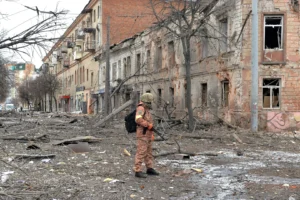While significant strides have been taken to enhance sexual and reproductive health and rights in the WHO European Region, challenges persist. In the run-up to the 73rd session of the WHO Regional Committee for Europe, WHO/Europe hosted a side event on this topic to discuss these key challenges with partners from across the Region.
Sexual and reproductive health and rights (SRHR) are crucial for overall health and well-being, gender equality, and societal development, as recognized by the Sustainable Development Goals. Over the past two decades, the Region has made significant progress in improving SRHR. However, considerable inequalities persist in SRHR outcomes among Member States.
“Collective action is needed to address systemic barriers hindering access to safe, high-quality, respectful, and affordable sexual and reproductive health services across a range of contexts, to ensure SRHR is a reality for everyone – especially women, girls and young persons who are more likely to be left behind for a number of reasons,” noted Dr Natasha Azzopardi Muscat, Director of WHO/Europe’s Division of Country Health Policies and Systems.
Status of sexual and reproductive health and rights
Data gathered from across the Region are sobering.
Maternal mortality rates vary significantly across countries. In 2020, mortality rates ranged from 2 to 68 per 100 000 live births, with some countries’ reporting rates 6 times higher than the regional average. Since then, more countries have reported increases in maternal mortality rates, potentially marking the first significant increase in these levels in the last 20 years.
While over half of women of child-bearing age in the Region are using contraception, over 36% of all pregnancies are unintended and often lead to unsafe abortions and severe, long-term negative health consequences for women, families, and societies.
Alarmingly, adolescent pregnancies are also on the rise, with some countries experiencing adolescent birth rates 3 times higher than the regional average, reaching an unprecedented 40 births per 1000 women aged 15–19 years.
Additionally, some Member States are witnessing a rise in caesarean section rates, increasing to levels that are not justified medically.
Emergencies like the COVID-19 pandemic, conflict and forced displacement have highlighted the fragility of progress made so far – and have underscored that, when core sexual and reproductive health services are disrupted or deemed non-essential, women, their families and indeed society at large are greatly affected.
Next steps
“To bridge equity gaps and safeguard the sexual and reproductive health and rights of vulnerable populations, we must focus on building a resilient health system, resolving policy and legislative obstacles, and eliminating discrimination based on sexual orientation and gender identity,” stressed Dr Hans Henri P. Kluge, WHO Regional Director for Europe. “This requires not only strategic health policy-making but, equally importantly, political will.”
Since 2016, WHO’s “Action plan for sexual and reproductive health: towards achieving the 2030 Agenda for Sustainable Development in Europe – leaving no one behind” has served as the Region’s primary guiding document on SRHR. It provides a comprehensive framework to support countries to ensure that people are achieving their full potential for sexual and reproductive health and well-being at both national and subnational levels.
“The progress made by Member States to date, in collaboration with national and international partners, demonstrates their commitment to advancing the objectives outlined in the Action plan. It’s now crucial to ramp up the Action plan implementation through a strengthened and genuinely multisectoral approach, ensuring momentum until 2030 in alignment with the SDGs,” concluded Dr Kluge.
Source : WHO











